
Ever wondered if the pet food industry is a goldmine waiting to be tapped?
Pet food manufacturing can be highly profitable, with success hinging on factors like production scale, market demand, and operational efficiency. Large manufacturers benefit from economies of scale, whereas smaller businesses may focus on niche markets to maximize profit margins.
I remember my first foray into this world, filled with both excitement and trepidation. Understanding the industry's basic profitability was just the tip of the iceberg. I soon realized that digging deeper into specific market conditions and regional opportunities offered invaluable insights. This journey is not just about numbers; it's about aligning passion with strategic thinking. Dive in with me as we uncover the secrets to thriving in this dynamic field.
Large manufacturers benefit from economies of scale.صحيح
Economies of scale reduce costs per unit, increasing profitability.
Small pet food businesses can't be profitable.خطأ
Smaller businesses can thrive by targeting niche markets.
What Factors Influence the Profitability of Pet Food Manufacturing?
Imagine whipping up a gourmet meal for your pet that rivals anything you'd make for yourself. That's the magic of pet food manufacturing.
Profitability in pet food manufacturing is influenced by production costs, market demand, regulatory compliance, and innovation. Efficient management of these factors can lead to increased margins and sustainable growth.
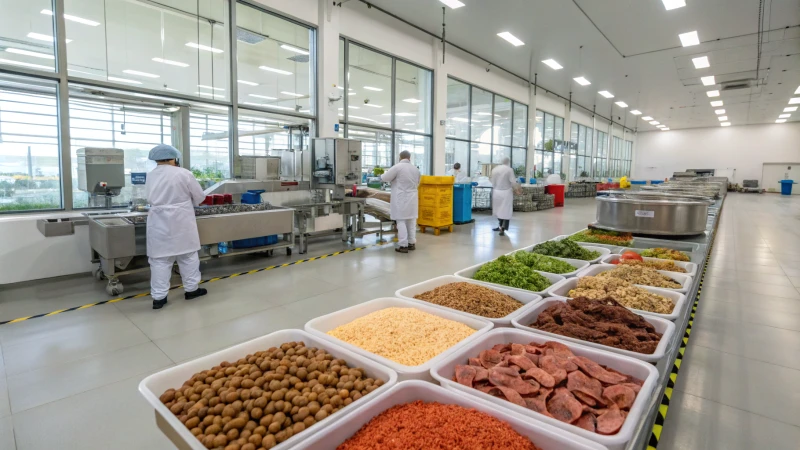
تكلفة الإنتاج
When I first dipped my toes into the pet food industry, I was floored by how much production costs could sway profitability. Think about it—every bag of premium kibble requires a delicate balance of high-quality ingredients, labor, and machinery. I once spent an entire afternoon comparing raw materials, marveling at how the best organic chicken could double my ingredient costs but was undeniably worth it when I saw how my customers' pets thrived.
| العامل | التأثير |
|---|---|
| المواد الخام | High quality increases costs but enhances product appeal |
| العمالة | Skilled workers improve efficiency but may cost more |
| الماكينات | Advanced technology reduces waste, boosting margins |
Market Demand and Consumer Preferences
Following trends isn't just for fashionistas; it's a lifeline for anyone in the pet food biz. I remember attending a pet expo where the buzzword was 'organic.' It was clear that consumers were willing to pay top dollar for specialty foods. Adapting to these shifts not only kept my business afloat but propelled it forward.
الامتثال التنظيمي
Let me tell you, navigating regulations is no small feat. I learned the hard way that staying compliant with اللوائح1 isn't just about avoiding fines; it's about building trust. There’s peace of mind knowing that meeting FDA standards means our food isn't just good—it's safe.
الابتكارات التكنولوجية
Innovation is where things get exciting. The first time I saw automated machinery in action, I felt like a kid in a candy store. It's amazing how technology can refine production processes, from boosting efficiency to reducing costs, all while opening doors to new product lines that cater to niche markets.
- الأتمتة: Reduces labor costs and increases production speed.
- الاستدامة: Eco-friendly processes attract environmentally conscious consumers.
Scale of Operations
I've dabbled in various scales of operations, from crafting small batches at home to running larger industrial setups. Each comes with its own challenges and perks. With large-scale operations, for example, economies of scale are a game changer—imagine buying ingredients in bulk and watching your per-unit costs drop.
على سبيل المثال:
- Home-based: Focus on niche markets with unique offerings.
- على نطاق صغير: Balance between artisanal appeal and broader distribution.
- على نطاق واسع: Leverage bulk purchasing2 and advanced logistics for cost efficiency.
Understanding these factors isn't just theoretical; it's practical wisdom that has guided my journey in optimizing operations and strategies for better financial performance.
High-quality ingredients always increase profit margins.خطأ
While they enhance appeal, high-quality ingredients raise production costs.
تساهم الأتمتة في خفض تكاليف العمالة في تصنيع أغذية الحيوانات الأليفة.صحيح
Automation increases production speed and efficiency, lowering labor expenses.
How Do Different Scales of Production Impact Profit Margins?
Ever wondered how the scale of production can make or break your profit margins?
Different scales of production, such as home use, small-scale commercial, and large-scale industrial, impact profit margins through economies and diseconomies of scale. Larger scales often lead to cost efficiencies, boosting margins, while smaller scales may struggle with higher per-unit costs.
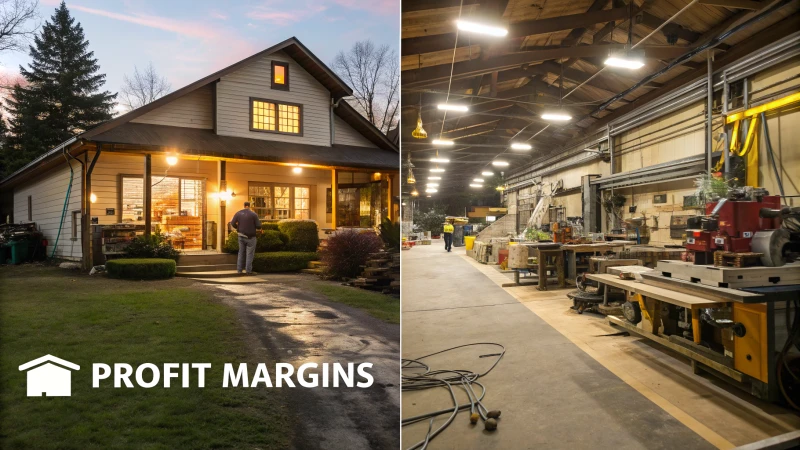
فهم وفورات الحجم
Economies of scale occur when increasing production lowers the average cost per unit. This typically happens in large-scale industrial3 settings, where investments in automation and bulk purchasing reduce costs. Imagine a big pet food manufacturer buying tons of ingredients at bulk prices—those savings can seriously boost profit margins.
| حجم الإنتاج | التأثير على التكاليف | مثال على ذلك |
|---|---|---|
| للاستخدام المنزلي | High per unit | Homemade pet treats |
| على نطاق صغير | معتدل | Local bakery treats |
| على نطاق واسع | Low per unit | Mass-produced pet food |
Diseconomies of Scale
Conversely, diseconomies of scale can arise if a company grows too large, leading to inefficiencies. Picture a massive operation where communication breaks down and management struggles to keep up. These inefficiencies can creep in, increasing costs even when production volumes are high, ultimately chipping away at those precious profit margins despite high production volumes.
الإنتاج التجاري على نطاق صغير
Small-scale producers have their own unique charm. They’re nimble and often have lower overheads but face challenges like higher raw material costs per unit. I recall a small pet treat business that had to price their goodies higher than larger companies just to stay afloat compared to a large manufacturer4.
Home Use Production
At the smallest scale, producing goods for home use is all about personal touch and customization. However, it’s not always cost-effective. When I first started making pet treats at home, the ingredient costs were surprisingly steep compared to buying them from commercial producers5.
By examining these different scales, I can strategically align my production processes to optimize profit margins. It’s all about balancing between cost savings from economies of scale and steering clear of pitfalls associated with diseconomies of scale. This strategic approach is what helps businesses thrive in today’s competitive marketplace.
Large-scale production always boosts profit margins.خطأ
While economies of scale reduce costs, diseconomies can erode profits.
Small-scale producers have higher per-unit costs than large producers.صحيح
Small-scale operations lack bulk purchasing power, increasing costs.
What Are the Key Market Trends in Pet Food Manufacturing?
Exploring the pet food industry, I've seen trends that redefine how we nourish our furry friends, blending sustainability and technology.
The key trends in pet food manufacturing include a focus on sustainability, increasing demand for premium and customized products, and the use of advanced technologies to improve efficiency and product quality.
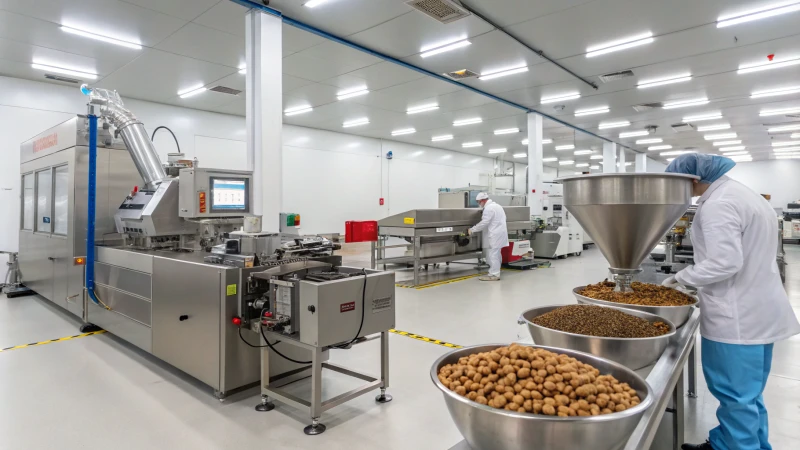
الاستدامة والممارسات الصديقة للبيئة
I remember a time when I first noticed my own consumer habits shifting towards eco-friendly choices. This same movement is sweeping through pet food manufacturing. Many companies are now prioritizing sustainable practices like recyclable packaging and sourcing local ingredients, just like مارس للعناية بالحيوانات الأليفة6 with its ambitious goals to reduce carbon footprints. People, including myself, are increasingly choosing brands that mirror their own eco-conscious values.
Premiumization and Customization
My dog's health became a priority when she developed allergies, prompting me to explore premium pet foods. Many pet owners are similar—willing to invest in products promising superior nutrition or addressing specific dietary needs. This growing trend has led to specialized products like grain-free or organic options. Brands like Nestlé Purina7 are even offering tailored meals based on our pets' unique profiles.
الابتكارات التكنولوجية
In my career, I've seen how technology can transform industries. Similarly, automation and AI are revolutionizing pet food manufacturing, enhancing production efficiency and quality. Companies now use smart machinery for real-time monitoring, reducing errors significantly. Blockchain technology, too, is making waves by providing transparent supply chains—from farm to bowl.
| التكنولوجيا | المزايا |
|---|---|
| الأتمتة | Reduces labor costs, increases efficiency |
| الذكاء الاصطناعي | Enhances quality control and customization |
| Blockchain | توفير شفافية سلسلة التوريد |
التركيز على الصحة والعافية
It wasn't long ago when I started reading labels more carefully, even for my pet's food. The focus on health benefits is now at the forefront of pet food brands, much like human nutrition trends. Ingredients such as probiotics and omega-3 fatty acids are gaining popularity as they promise better health outcomes. Additionally, brands are developing functional foods targeting specific health concerns.
Global Market Expansion
During my travels, I've noticed the rise in pet ownership across different cultures. The pet food market isn't just booming in developed areas but also emerging markets like Brazil, India, and China. With rising incomes and more pets being adopted, these regions are experiencing significant market growth. يورومونيتور إنترناشيونال8 foresees robust development here, making them hotbeds for market expansion.
By keeping an eye on these trends, manufacturers can strategically position themselves to meet the evolving demands of pet owners around the world.
Pet food manufacturers are using AI for quality control.صحيح
AI enhances quality control by monitoring production processes in real-time.
Blockchain is irrelevant to pet food supply chains.خطأ
Blockchain provides transparency and traceability in the supply chain.
How Does Geographical Location Affect Pet Food Manufacturing Profitability?
Imagine navigating the intricate dance of market demands and regional resources in the pet food industry. It's a journey that shapes profitability in unexpected ways.
Geographical location affects pet food manufacturing profitability through market demand, resource availability, labor costs, and regulatory environments. Different regions offer unique advantages and challenges that influence overall business success.
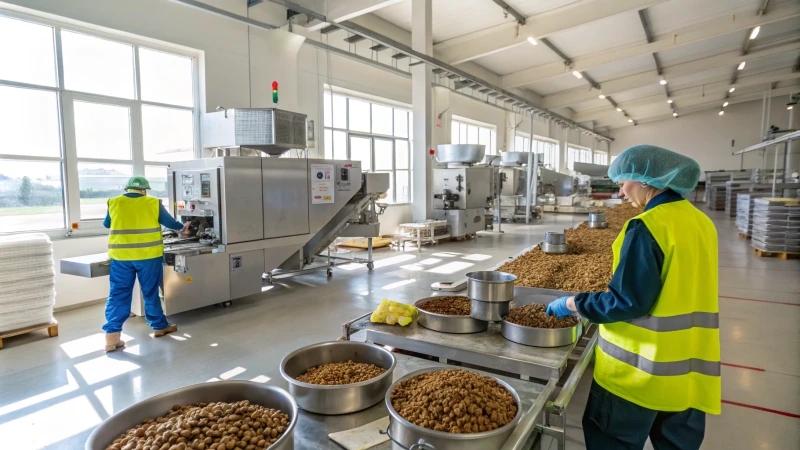
Market Demand and Consumer Preferences
I remember attending a pet expo in the bustling heart of the الولايات المتحدة الأمريكية9, where pet owners spoke passionately about their preferences for organic and gourmet pet foods. It was a clear reminder that understanding regional market demand is essential for manufacturers. In places like the U.S., with its high pet ownership rates, there's a constant hunger for a wide array of pet food products. However, when I traveled to emerging markets, I noticed a budding interest in premium pet nutrition. Catering to these local tastes not only boosts sales but also fosters brand loyalty.
Resource Availability and Production Costs
During a visit to استراليا10, I marveled at the vast expanses of agricultural land rich with grains and meats. Here, manufacturers enjoy reduced material costs, thanks to the abundant local resources. But I've also experienced the challenges in regions where these resources are scarce, leading to higher expenses due to importation.
| المنطقة | Key Resources | Potential Cost Impact |
|---|---|---|
| الولايات المتحدة الأمريكية | Corn, Soybeans | Lower production costs |
| اليابان | Imported Meats | Higher transportation costs |
Regulatory Environment
Navigating the regulatory landscape is another critical factor. My experience in Europe taught me about its stringent pet food safety regulations. These standards require significant investment in quality control, yet they are vital for maintaining profitability while ensuring compliance.
Labor Costs and Infrastructure
I once visited a production facility in المكسيك11 and was impressed by the balance they achieved between lower labor costs and overcoming infrastructure challenges. Here, manufacturing expenses can be minimized, yet it's crucial to address any distribution inefficiencies that may arise.
Understanding these geographical influences isn't just an academic exercise—it's vital for strategic planning. By considering factors like market demand, resource availability, and regulatory environments, manufacturers can tailor their operations for profitability across diverse regions. These insights can guide strategic expansions12 and investments tailored to specific markets.
Regions with high pet ownership have higher pet food demand.صحيح
High pet ownership directly correlates with increased demand for diverse pet food.
Labor costs are uniform across all regions.خطأ
Labor costs vary significantly by region, impacting production expenses.
What Are the Financial Metrics to Consider in Pet Food Manufacturing?
Ever wondered what keeps pet food manufacturers afloat amidst the financial whirlwind?
Pet food manufacturing requires careful analysis of several financial metrics such as cost of goods sold (COGS), gross profit margin, return on investment (ROI), and inventory turnover. These metrics help assess profitability, operational efficiency, and overall business health.
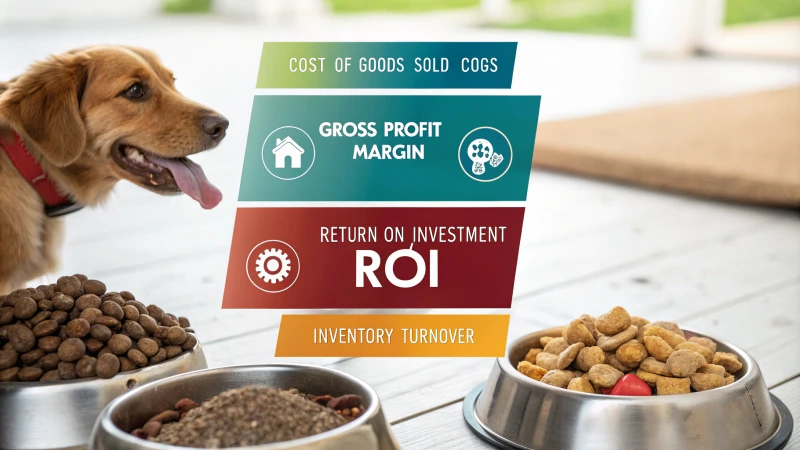
Cost of Goods Sold (COGS)
I remember the first time I took a deep dive into the world of pet food manufacturing—calculating the cost of goods sold (COGS) was like solving a puzzle. It felt a bit like trying to budget for a lavish family dinner, where every ingredient, from the prime meat cuts to the finest grains, had to be accounted for. COGS includes everything from raw materials to labor and overhead expenses. Keeping an eye on these numbers helps me fine-tune our pricing strategies and ultimately manage profitability.
Consider the following example:
| المكوّن | Cost ($) |
|---|---|
| مواد خام | 100,000 |
| العمالة | 50,000 |
| Overhead | 25,000 |
| Total COGS | 175,000 |
Understanding these components aids in making strategic decisions13 that can lower production costs and boost profits.
هامش الربح الإجمالي
The thrill of calculating gross profit margin is akin to that moment you realize your homemade pet treats are a hit among neighborhood dogs—it means your production processes are efficient and your cost controls are on point. This metric is about figuring out how much revenue exceeds the COGS.
The formula for calculating gross profit margin is:
(Revenue - COGS) / Revenue x 100
For instance, if I generate $500,000 in revenue and incur $175,000 in COGS, my gross profit margin would be:
(($500,000 - $175,000) / $500,000) x 100 = 65%
This figure helps identify whether there’s room for optimization14 in production or pricing.
العائد على الاستثمار (ROI)
Ah, the sweet satisfaction of seeing returns on your investment! In pet food manufacturing, whether it’s investing in state-of-the-art machinery or new tech upgrades, ROI tells me if the leap was worth it. It’s like betting on the right horse and watching it win.
Calculating ROI involves determining the net return from the investment divided by its cost:
(Net Profit / Cost of Investment) x 100
Evaluating ROI supports informed decision-making regarding capital expenditures and scaling operations.
Inventory Turnover
Inventory turnover ratio is akin to the heartbeat of my operation. It shows how efficiently I’m managing inventory—how quickly it flies off the shelves and gets replaced. A higher turnover rate signals that I’m doing something right, like cooking up a storm that everyone wants to taste!
The formula is:
Cost of Goods Sold / Average Inventory
A higher turnover rate suggests effective inventory management practices and minimal holding costs. For instance, a high turnover15 rate indicates robust demand for products and efficient supply chain management.
in conclusion,
gGetting to grips with these financial metrics is like having a roadmap through the bustling world of pet food manufacturing. They offer insights that keep me competitive and ensure sustainable growth in this ever-evolving market.
COGS includes only raw material costs.خطأ
COGS also includes labor and overhead costs, not just raw materials.
A 65% gross profit margin indicates efficient cost control.صحيح
A high gross profit margin like 65% signifies effective production processes.
How Can Technological Innovation Enhance Profitability in Pet Food Manufacturing?
I remember when I first witnessed the magic of technology in action on the pet food factory floor. It was like stepping into the future of pet nutrition.
Incorporating technology in pet food manufacturing boosts profitability by optimizing production, reducing waste, and enhancing quality. Innovations like automation and data analytics streamline processes, leading to cost savings and improved product offerings.

احتضان الأتمتة لتحقيق الكفاءة
It's incredible how automation has transformed our manufacturing processes. Imagine this: as I walked through our plant one day, I watched a state-of-the-art automated system handle everything from mixing to packaging without missing a beat. It was a revelation to see how these machines could maintain such consistent quality, which means happier customers and fewer complaints.
| فوائد الأتمتة | التأثير |
|---|---|
| جودة متسقة | Better customer satisfaction16 |
Leveraging Data Analytics for Insights
Data analytics is like having a crystal ball that shows us exactly where we can improve. I remember analyzing a batch of production data one evening and uncovering a small inefficiency that was costing us thousands. By tweaking our ingredient usage based on these insights, we cut down on waste significantly. It's amazing how these small changes can add up to big savings over time.
This data-driven approach leads to more informed decisions17 and improved profitability.
Enhancing Quality Control Through Technology
With IoT sensors, I feel like we have eyes everywhere on the production line. These sensors are a game-changer; they help us catch and correct issues before they become costly problems. This not only saves us from potential recalls but also keeps our brand's reputation intact. There's peace of mind knowing that quality control is being handled with such precision.
Sustainability as a Profit Driver
We're passionate about sustainability here, not just because it's the right thing to do but because it's also good for business. By adopting eco-friendly packaging and energy-efficient machinery, we've attracted a new wave of environmentally conscious consumers. One time, after implementing a major sustainability initiative, we saw our profits climb as we tapped into this growing market segment.
This approach can open new market segments and increase profits18.
Tailoring Products with AI
AI is where we can really get creative with our product offerings. By using AI-driven solutions, we've been able to tailor products to meet specific dietary needs. One memorable project involved creating a custom formula for a client that led to premium pricing and boosted our profitability.
Investing in these AI technologies19 can provide a competitive edge in the market.
تساهم الأتمتة في خفض تكاليف العمالة في تصنيع أغذية الحيوانات الأليفة.صحيح
Automation streamlines processes, lowering the need for manual labor.
AI customization decreases customer satisfaction in pet food.خطأ
AI allows personalized products, enhancing customer satisfaction and loyalty.
الخاتمة
Pet food manufacturing can be profitable, influenced by production scale, market demand, operational efficiency, and technological innovations. Understanding these factors is key to maximizing profit margins.
Explore the importance of regulatory compliance in maintaining market access. ↩
Discover how large-scale operations reduce costs through economies of scale. ↩
This link will provide examples and case studies on how industrial producers benefit from economies of scale. ↩
Explore comparative profitability between small and large-scale producers. ↩
Gain insights into cost differences between home and commercial production methods. ↩
Explore how Mars Petcare is leading the way in sustainable practices within the pet food industry. ↩
Learn about Nestlé Purina's innovative approach to providing customized nutrition for pets. ↩
Discover insights into emerging markets for pet food from Euromonitor International. ↩
Explore the high pet ownership rates in the U.S., which drive diverse product demand in the pet food market. ↩
Learn about Australia's agricultural abundance that benefits local pet food manufacturers with cost-effective resources. ↩
Discover how Mexico's lower labor costs can reduce production expenses for pet food manufacturers. ↩
Find strategies for expanding into new markets within the pet food industry to optimize profitability. ↩
Discover effective strategies that manufacturers use to reduce production costs and enhance profitability. ↩
Learn optimization techniques for improving production efficiency and maximizing profit margins. ↩
Explore why maintaining a high inventory turnover is beneficial for business efficiency and profitability. ↩
Discover how automation enhances efficiency and quality in manufacturing, reducing costs and improving profitability. ↩
Explore how data analytics optimizes processes, reduces waste, and boosts profitability in manufacturing. ↩
Learn how sustainable practices attract eco-conscious consumers and drive profitability. ↩
Understand how AI enables product personalization, enhancing customer satisfaction and profitability. ↩








